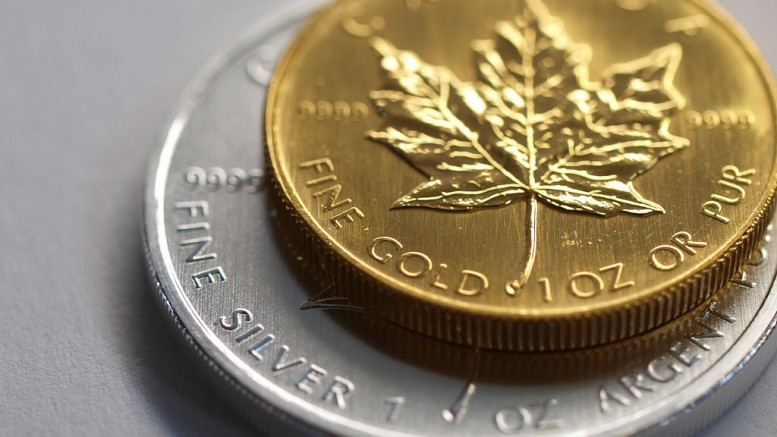The following is an edited commentary by Thomson Reuters as it publishes its “GFMS Gold Survey: Q2 2016 Review and Outlook”, which is available for download at https://forms.thomsonreuters.com/gfms/.
The first half of 2016 had seen a dramatic change in the rhythm and flows of the gold industry, even long before Brexit. Encapsulating this, we estimate that for the second quarter in a row physical demand was down by more than a fifth year-on-year, to a seven-year low, with Asian offtake being exceptionally weak.
Demand for gold exchange-traded funds (ETFs), in stark contrast, has set a new record half yearly total in the first six months of 2016 at 568 tonnes (18.3 million oz.), with interest centred on North America and London.
We have revised our 2016 average gold price forecast to US$1,279 per oz. from US$1,184 per oz. forecast in April. The revision is a mark to market of the impressive gains that gold has posted so far this year, and reflecting the changed sentiment stemming from increased uncertainty from economic and political outlooks. These include Brexit, reduced expectations of a rate rise from the U.S. Federal reserve, a wobbly Italian banking sector and the U.S. presidential race.
China’s total gold demand remained in free fall in the second quarter of 2016, declining across the board. Jewellery offtake, which has constituted over 60% of the country’s total physical demand in the past, fell 31% year-on-year. This represents the industry’s worst second-quarter performance since 2009. Economic pressures remain central to the weakness, as consumers have tightened purse strings and limited discretionary spending. The absence of positive price expectation has also been a factor, with investors looking elsewhere for capital growth. After three consecutive quarters of increases, gold demand from the retail investment segment (bars and coins) stalled in the second quarter of 2016, recording a 12% decline.
Jewellery consumption in India declined by 56% year-on-year to 69 tonnes in the second quarter, making it the second consecutive quarter of hefty year-on-year declines. The second quarter, which is normally a period of seasonally strong demand, started with a weak sentiment, as a result of continued nationwide strike, which stocked negative publicity for the industry, leaving consumers divided on the purchasing decisions. More importantly, consumers, who are otherwise well informed of the retail price, were left guessing, as the price varied significantly from what was available in the media. Demand from rural areas stayed muted — a result of a poor monsoon in 2015. Higher gold prices in local terms also weighed on jewellery demand. The second-quarter average was up 10% year-on-year, and from the start of the year the price had surged 25%, to its highest since October 2013.
World gold mine supply increased by less than 2 tonnes year-on-year, totalling 744 tonnes (23.9 million oz.) in the first quarter of 2016. We expect that mine supply will contract in the second quarter, with the total estimated at 770 tonnes — a 2% year-on-year decrease — with losses expected in China, Mexico and Mongolia. More broadly, there are relatively few projects and expansions expected to begin producing this year, and those in the near-term pipeline are fairly modest in scale, hence our view that global mine supply is set for a multi-year downtrend in 2016. Supply from scrap was up 9% year-on-year for the second quarter, aided both by the stronger dollar price and in many cases depreciating local currencies.
The market is in a small surplus for the first half of the year, with the dramatic drop in physical demand largely offset by the stellar western demand for ETFs. The uptick in scrap supply ensured that total supply rose, despite a contraction in mine production, and ensured a surplus at the net balance.
Investor sentiment towards gold had rebounded in the first half of the year, triggered by concerns about the slowdown in emerging markets and the impact on the global economy, as well as reduced expectations of the interest rate increase from the Fed. The Brexit shock after the U.K. referendum on June 23 had sent shock waves across global markets and sparked demand for safe-haven gold. This translated into a rebound in interest from speculative investors and impressive inflows into gold ETFs.
U.S. Commodity Futures Trading Commission data on managed money positions in gold futures and options shows that net long speculative positions surged to an all-time high at the beginning of July, while short positions stayed substantially below their previous highs. Demand for gold ETFs, meanwhile, has set a record total in the first six months of 2016, at 568 tonnes (18.3 million oz.), with interest centred on North America and London.




Be the first to comment on "Facts ‘n’ Figures: Gold is ‘back in style’ amid economic, political uncertainty, GFMS says"